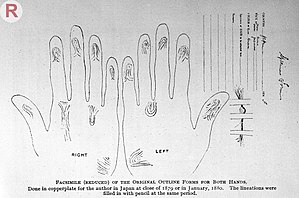Fingerprint technology has come a long way since its ancient origins. The unique patterns and ridges on our fingertips have intrigued scientists and investigators for centuries. In this blog post, we will delve into the fascinating evolution of fingerprint technology, exploring its historical roots, significant milestones, and the advancements that have shaped modern biometric systems.

Ancient Origins and Early Recognition:
Discuss how fingerprints were first recognized as a means of identification in ancient civilizations like ancient China and Babylon. Highlight the early methods used, such as ink imprints, seal impressions, and the development of fingerprint classification systems.
Sir Francis Galton and the Birth of Modern Fingerprinting:
Explain the groundbreaking work of Sir Francis Galton in the late 19th century, who demonstrated the uniqueness and permanence of fingerprints. Explore his classification system and the first attempts at systematic fingerprint recording and identification.

Henry Classification System:
Discuss the contributions of Sir Edward Henry, who introduced the Henry Classification System in the early 20th century. Explain how this system revolutionized fingerprint identification by categorizing prints based on their pattern types, enabling efficient searching and matching.

Advancements in Fingerprint Processing Techniques:
Highlight the advancements in fingerprint processing techniques, including the introduction of fingerprint powders, chemical reagents, and latent fingerprint development methods. Explain how these techniques improved the visibility and quality of latent prints, aiding investigators in solving crimes.
Automated Fingerprint Identification Systems (AFIS):
Explore the introduction of automated systems in fingerprint identification, such as Automated Fingerprint Identification Systems (AFIS). Discuss how AFIS revolutionized the field by digitizing and automating the fingerprint matching process, significantly enhancing the speed and accuracy of identification.
Biometric Applications and Integration
Examine how fingerprints have been integrated into various biometric applications, such as access control systems, mobile devices, and border security. Discuss the advantages of fingerprints as biometric identifiers and their widespread adoption in modern technology.
Emerging Technologies and Future Trends:
Delve into the emerging technologies and trends in fingerprint technology, such as advanced imaging techniques, 3D fingerprint scanning, and artificial intelligence-driven identification algorithms. Explore how these advancements are further enhancing accuracy, efficiency, and security in fingerprint recognition.
Ethical and Legal Considerations:
Address the ethical and legal considerations surrounding the use of fingerprints, including privacy concerns, data protection, and potential biases in identification systems. Discuss the need for transparency, accountability, and responsible use of fingerprint technology.
If you want to looking a career in Fingerprint science your can join Lloyd Institute of Forensic Science PG Diploma in Fingerprint Science programme


Leave a comment